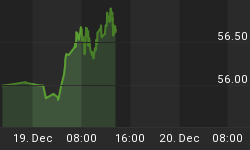The streaming war is heating up, and industry veteran, Netflix is struggling to adjust accordingly. But not all is lost for the streaming pioneer.
Despite the release of several popular programs, Netflix revealed that they had lost 126,000 customers in the US on Wednesday when they had anticipated gaining 352,000 new consumers in the second quarter of 2019. Worldwide net gains disappointed as well, with only 2.83 million new subscribers, well below their forecasted target of 4.71 million.
Due to the poor results, Netflix’s stock plummeted by 11.3% and weighed on the S&P 500.
The fundamentals looked a little better, however. Netflix’s profits were over $4.9 billion, 26% greater on a year-over-year basis, broadly satisfying expert forecasts. And although GAAP earnings fell by 29% to $271 million, or $0.60 per share.
But subscriber count is everything in this new business, so the considerable decline is understandably impacting investor sentiment. The company attributed the lower-than-expected figure primarily to a relative scarcity of fresh material, integrated with a “pull-forward” result from its massive 9.6 million subscriber addition in the first quarter.
Six brokerages cut their forecasts in reaction to the dip in the shares, however, there were no cuts to their ratings on the stock, still seen by a bulk of Wall Street companies as a high-potential growth service and a clear “buy”.
Can Netflix endure the streaming war?
Several mega-mergers have dominated the media over the past couple of years: AT&T-Time Warner, Disney-Fox, Comcast-Sky and Discovery-Scripps. Now that those deals have closed, we’re beginning to see these companies make moves to take advantage of the streaming market.
Disney+, the much-anticipated VOD service is set to release in the US in November, will bring must-see Marvel and Star Wars television shows that you won’t get anywhere else.
And then Warner Bros., for its part, has its own service set to be released next year in the US, which will consist of all of its existing material. So when that eventually comes to fruition, you’ll need to pay for that also if you want to keep watching Friends and other Warner Bros classics. Related: Billion-Dollar Esports Niche Could Be In The 2024 Olympics
Apple TV is also vying for a piece of the pie, with Steven Spielberg, Reese Witherspoon, Jennifer Aniston, Sofia Coppola, Kumail Nanjiani, and Damien Chazelle all confirmed for various programs.
For any company to survive the streaming war, they will need material that can take on Netflix’s library for individuals’ attention. And they’re beginning by pulling their content from rivals’ stashes.
What’s next for the streaming pioneer?
Though Netflix claims its 2019 operating deficit has peaked, it is tough to see how it will be able to pull back investments in fresh content and still measure up to its rival services. Pressure from competitors, meanwhile, will make future price increases less practical. Amazon and Disney have rewarding businesses and veritable war chests to tap. Netflix, on the other hand, has no external business lines to bankroll its new projects.
While the industry giant has a leg up thanks to first-mover advantage and current market leadership in the streaming war, it will take massive and relentless financial investment in content to maintain its lead. Whether it can do that on a sustainable basis, let alone at the level of success implied by its current $140 billion market cap, is far from certain.
In a world where content is king, Netflix is losing popular content at an alarming rate. It will have to double down on high-quality programs if it wants to remain competitive.
By Michael Kern for Safehaven.com
















